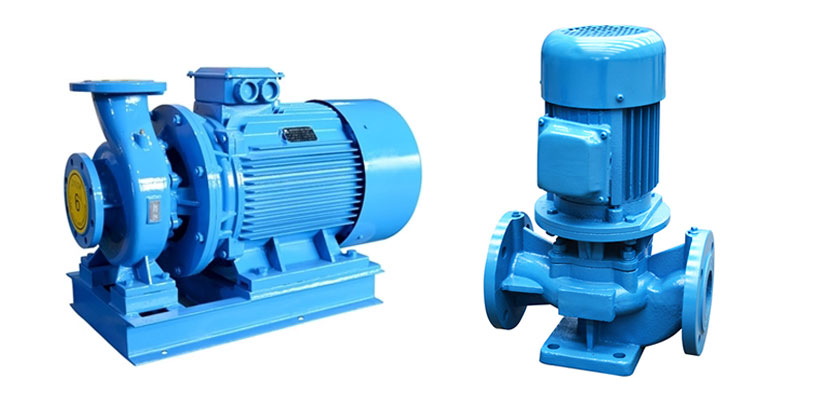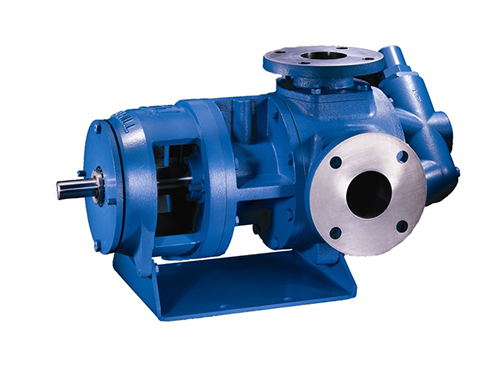Pumps are integral to numerous industrial, residential, and commercial applications, serving to transfer fluids efficiently and reliably. Among the vast array of pump types, centrifugal pumps and positive displacement pumps stand out as the most widely used. While both serve the fundamental purpose of fluid transportation, they operate on entirely different principles and are suited for distinct applications. Understanding their differences is crucial for selecting the right pump for a specific task. Next, we'll talk about the differences between these two pumps.
What is a centrifugal pump?
A centrifugal water pump is a mechanical device designed to transport fluids by converting rotational energy into kinetic energy, which is then transformed into pressure. The pump operates using an impeller, a rotating component that spins at high speed. When the impeller rotates, it draws fluid into its center and flings it outward through centrifugal force, increasing its velocity and pressure. The fluid exits the impeller into a casing, typically shaped like a spiral (volute), where its velocity energy is further converted into pressure energy. This process enables the pump to move large volumes of fluid efficiently.

What is a positive displacement pump?
A positive displacement (PD) pump moves a fluid by repeatedly enclosing a fixed volume and moving it mechanically through the system. The pumping action is cyclic and can be driven by pistons, screws, gears, rollers, diaphragms, or vanes. The positive displacement pump is the ability to produce a consistent flow rate. The flow rate of a positive displacement pump will remain constant when there are changes in pressure. However, this is not the case with centrifugal pumps, which are designed to react to changes in pressure.

Centrifugal Pump vs. Positive Displacement Pump
Fluid Transport Mechanism
Both centrifugal and positive displacement pumps move water from an entry point to an exit point with a controlled degree of force and volume. However, the mechanisms they use are different. Positive displacement pumps draw fluid into a cavity or expel fluid, and then force fluid out of the cavity by suction. Centrifugal or pneumatic pumps have a rotating impeller that draws fluid into the pump and forces it away from the outlet point at a higher velocity.
Type of conveyed fluid
Each type of pump works best with a different type of fluid. Positive displacement pumps can handle high-viscosity fluids, and their flow rate increases as the fluid thickens. On the other hand, centrifugal pumps also cannot handle viscous fluids due to frictional losses. Additionally, positive displacement pumps can handle fluids that are shear sensitive—or fluids that change when force, stress, or pressure is applied—while centrifugal pumps cannot; the impeller presents a risk to the fluid. Positive displacement pumps can also handle intermittent dry periods and can be primed without the need for liquid in the system to prime. The liquid is required in KNOLL centrifugal pump units to initiate pressurization control.
Centrifugal pumps and positive displacement pumps applications:
Centrifugal pumps are good at pumping thin liquids with low viscosity. These include water, thin oils and fuels, and chemicals. They are the most commonly used class of pumps in high-volume applications requiring high flow at low pressures.
Some popular applications of centrifugal pumps include:
- Water Supply and Distribution. Centrifugal pumps are commonly used in municipal water supply systems to transport and distribute water to residential, commercial, and industrial areas. They are also employed in boosting pressure for high-rise buildings.
- Irrigation Systems. In agriculture, single stage centrifugal pumps are integral for irrigation, helping to transport water from sources like rivers, reservoirs, or underground wells to fields efficiently.
- Oil and Gas Industry. These pumps are used for transporting crude oil, refined petroleum products, and other liquids. They are essential in pipeline operations and offshore drilling rigs for moving fluids.
- HVAC Systems. Centrifugal pumps are used in heating, ventilation, and air conditioning (HVAC) systems to circulate water in cooling and heating processes, maintaining temperature control in buildings.
- Chemical Processing. In chemical industries, centrifugal water pumps handle the transfer of various chemicals, often designed with corrosion-resistant materials to manage aggressive fluids.
Where positive displacement pumps are used:
Positive displacement pumps, on the other hand, excel in high-pressure and low-flow applications with viscous fluids. These pumps are suitable for the following applications:
- Municipal sewage system
- Petroleum Processing Center
- Manufacturing centers that produce or process thick pastes and other viscous materials
Complex facilities such as food processing plants and other manufacturing facilities benefit from a mix of both types of pumps. For example, a food processing operation will require a centrifugal pump to add water to the batch, but a positive displacement pump to control the movement of thicker compounds. Oil processing centers may need positive displacement pumps to handle crude oil, while they can use centrifugal pumps to handle thinner, lighter by-products.
Maintenance requirement
Centrifugal pumps generally have fewer moving parts, which can lead to lower maintenance requirements. However, issues like cavitation, impeller wear, and seal leaks may require attention.
Positive displacement pump often have more complex mechanisms involving multiple moving parts, leading to higher maintenance demands. Regular inspection and replacement of components like pistons, gears, or diaphragms are necessary to ensure optimal performance.
Conclusion
Choosing between a centrifugal pump and a positive displacement pump depends on the specific requirements of the application. Centrifugal pumps are ideal for high-flow, low-viscosity scenarios, while positive displacement pumps excel in handling viscous fluids, maintaining consistent flow rates, and operating under high pressures. Understanding their differences in operating principles, applications, and maintenance needs can guide users in selecting the right pump, ensuring efficiency, reliability, and cost-effectiveness. Inverter Shop will give you help if you want to know more.
